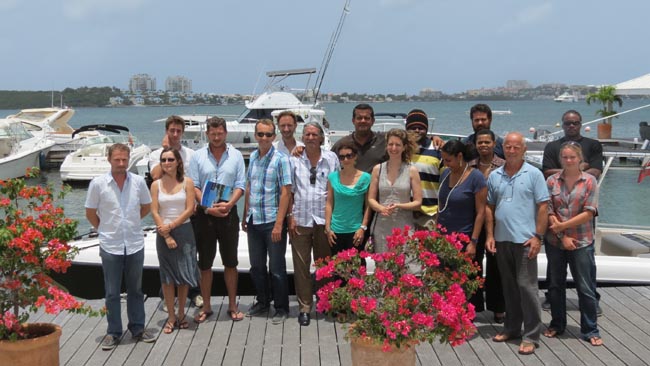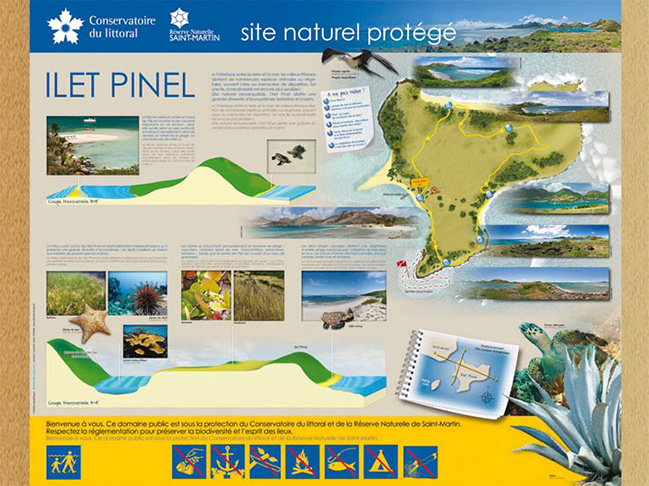Thirty million tourists visit the Caribbean each year. Two million of them choose Saint-Martin, where the tourism industry comes first, and they have estimated that 400,000 visit the Nature Reserve. On these fragile sites, often under threat, how can they welcome visitors without destroying sites? Consequently, sustainable tourism was the subject discussed in great depth, from June 12th to 14th at the Mercure Hotel in Saint-Martin, where TE ME UM and CAR-SPAW had invited area managers of marine protected areas. As co-organizer of the event, the Saint-Martin Nature Reserve was there around the table with the Marine Parks of Anguilla and St. Eustatius, the National Park of Guadeloupe, the Petite-Terre Nature Reserve in Guadeloupe, the Martinique branch of the Conservatoire du Littoral and Martinique’s DEAL, as well as Reunion’s Marine Nature Reserve, in the Indian Ocean. Regulations and welcoming of visitors onto sites, the various partnerships established with tour operators in each territory, marketing and product development, charters and eco-labels, were the four topics around which managers held discussions, arguments and debates. Everyone came with their experiences and questions, keen to learn from the others, the goal being to improve management practices along the lines of what exists elsewhere. For example, the Nature Reserve in Petite-Terre, Guadeloupe, was greatly inspired by the mooring fee initially set up by the Saint- Martin Reserve, that is successful thanks to a trust partnership held with the users. A bilingual report of experiences is being put together to share the content of these meetings with other managers of protected natural sites.
TE ME UM and CAR-SPAW, what are they?
- The specific objective of TE ME UM is to strengthen the capacity of managers of protected natural sites in the overseas territories, at a local level with each Collectivity and also regionally via networking to facilitate exchanges, as with the three days of technical discussions about sustainable tourism.
- Based in Guadeloupe and funded by the French State, CAR-SPAW (Specially Protected Areas and Wildlife) Regional Activity Center for specially protected species and areas in the Caribbean, implements the SPAW protocol related to the protection of marine and coastal biodiversity within the wider Caribbean region, from the Gulf of Mexico to the Caribbean Sea. This protocol to date includes 16 countries in the region.


















